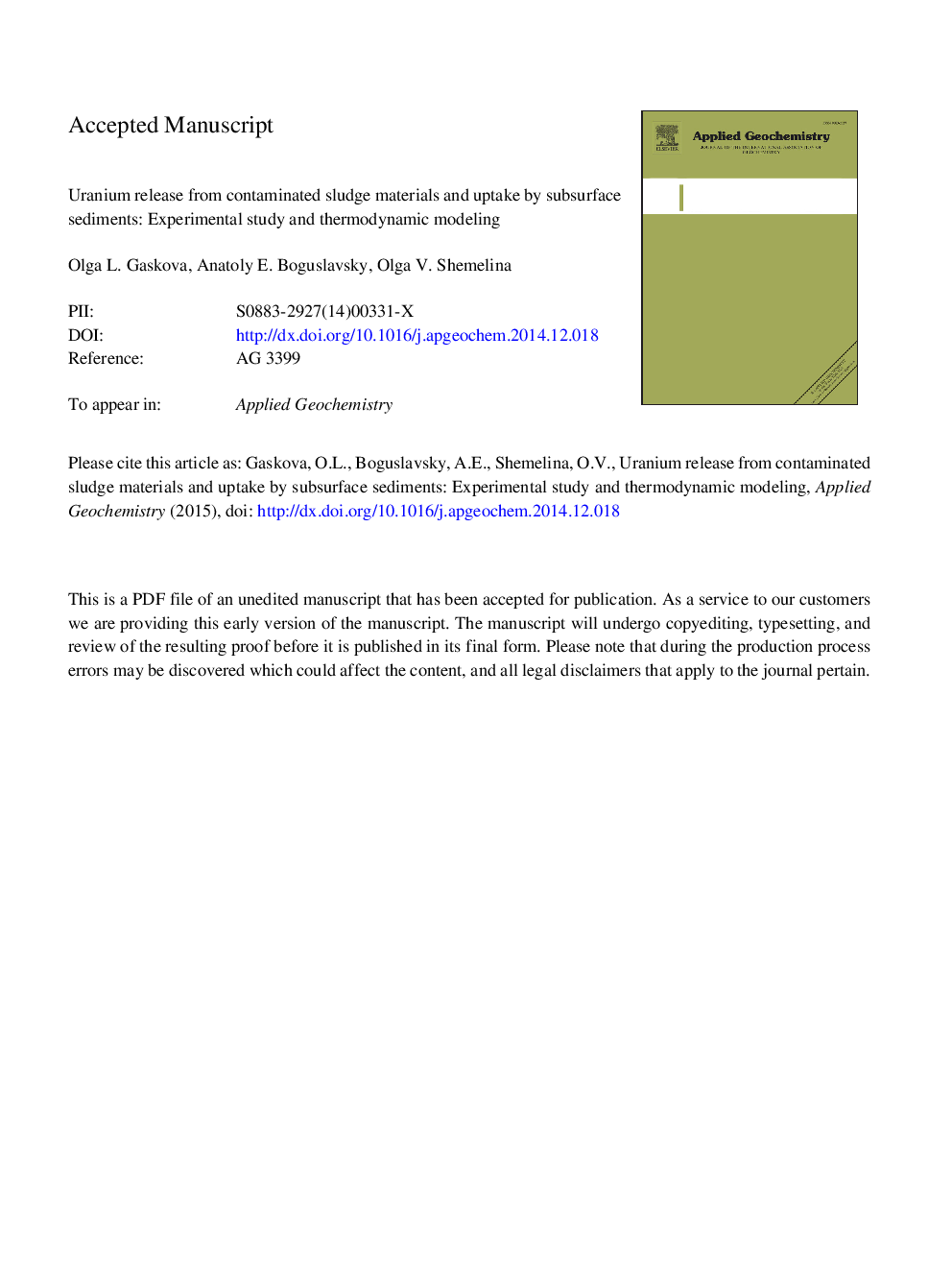| Article ID | Journal | Published Year | Pages | File Type |
|---|---|---|---|---|
| 6335209 | Applied Geochemistry | 2015 | 23 Pages |
Abstract
Uranium is a common contaminant of concern in the aquifers of nuclear waste management facilities around the world. The Electrochemical Plant (ECP) (Krasnoyarsk Krai, Russia) and the Angarsk Electrolysis Chemical Complex (AEСC) (Irkutsk Region, Russia) have produced enriched uranium and related nuclear wastes (sludge materials) since the 1960s. The results of the detailed sampling of groundwater and waste solutions near the storage sites of radioactive waste are presented elsewhere (Gaskova et al., 2011, Boguslavskiy et al., 2012). A number of experimental studies were conducted in the laboratory (a) to investigate the uranium-containing sludge leaching by regional groundwater and (b) to understand the ability of host sediments to retain major and minor components from drainage solutions as a function of the water/rock ratio (indicating the timescale over which the behavior is observed). The geochemical modeling code “HCh” was applied to simulate these processes and to predict the long-term environmental impact of residual uranium. The experimental and thermodynamic results indicate that U leaching from the sludge materials is less dependent on the specific solubility of the sludge sediments and more dependent on the solid uranium species in this sludge. The model simulation of uranium sorption in dynamic experiments was successful only in the case of the permanent filtration of less mineralized groundwater in fine-grained clay rocks. To more accurately describe the potential future release of U from the residual waste sites, a series of batch reactor experiments needs to be conducted.
Related Topics
Physical Sciences and Engineering
Earth and Planetary Sciences
Geochemistry and Petrology
Authors
Olga L. Gaskova, Anatoly E. Boguslavsky, Olga V. Shemelina,
